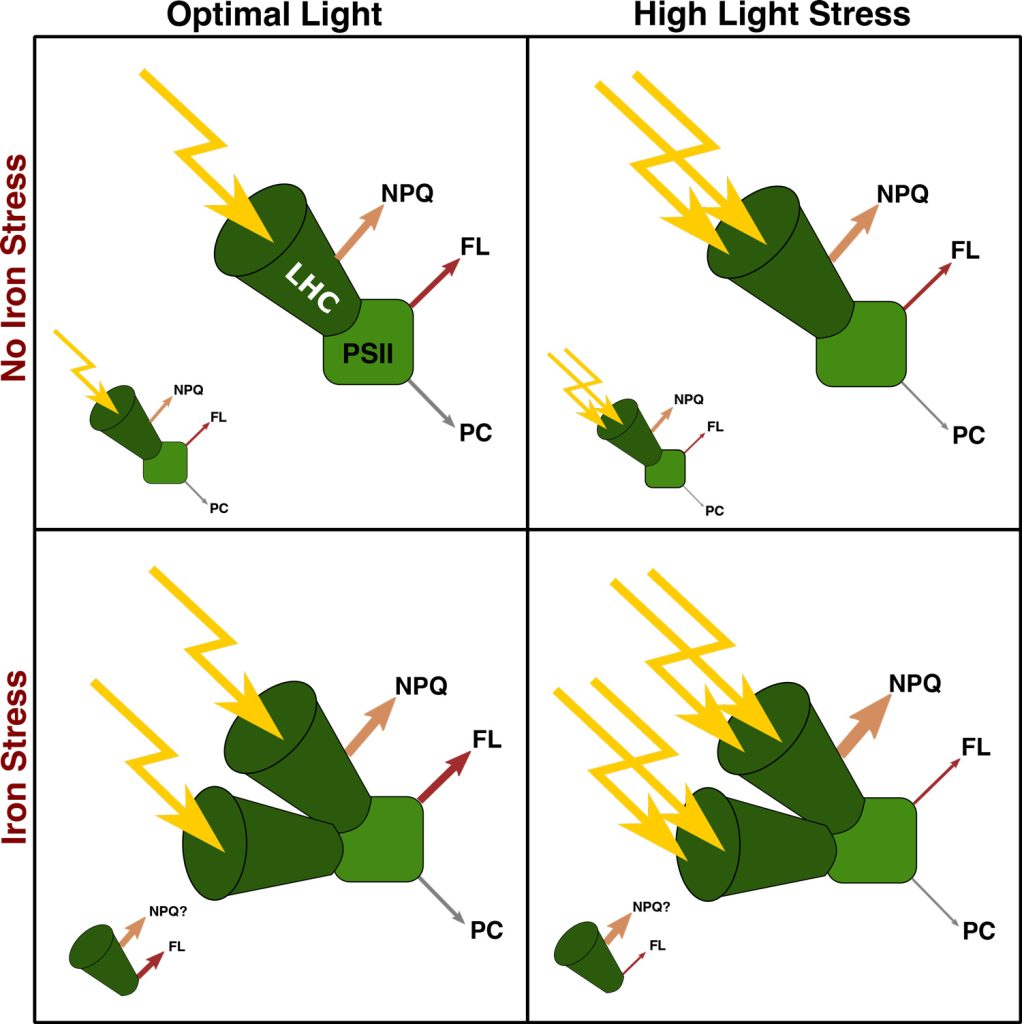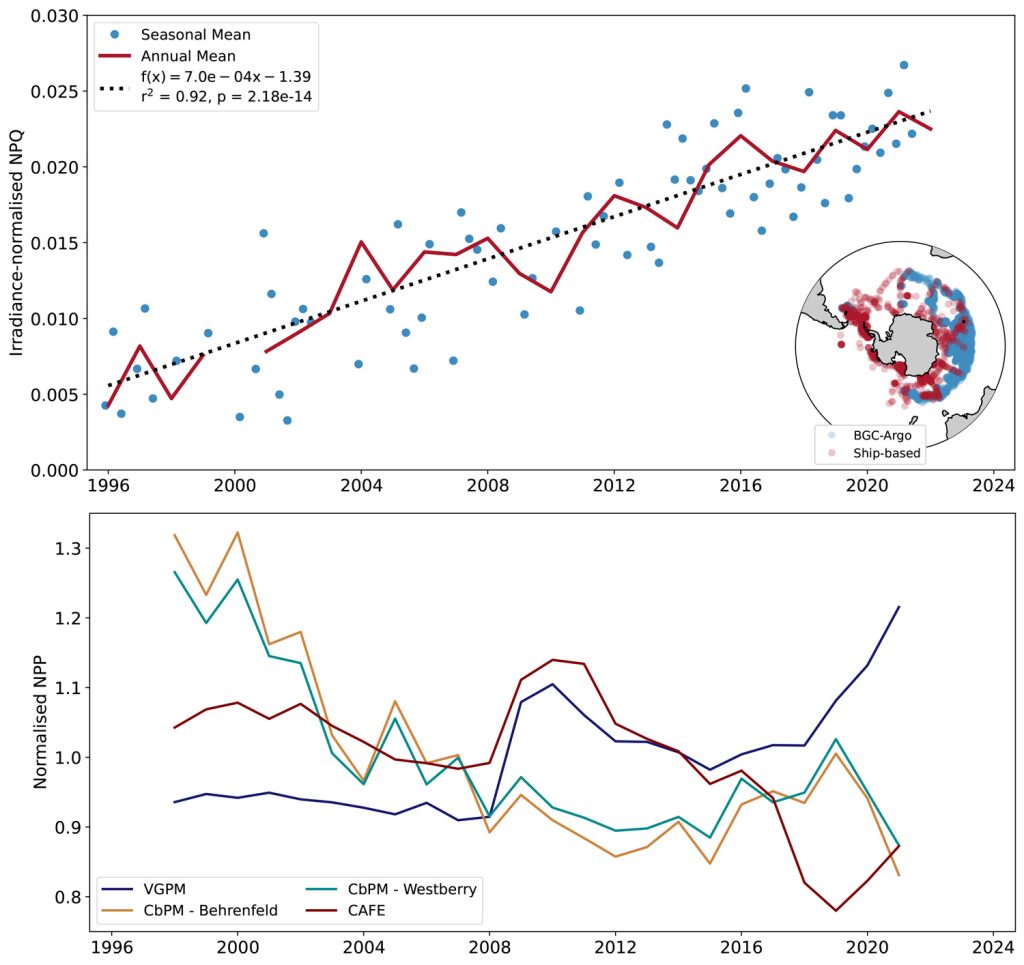Irradiance-normalized non-photochemical quenching (NPQ): a new proxy of iron stress for phytoplankton
The Southern Ocean is responsible for absorbing half of the total oceanic uptake of anthropogenic CO2 and three quarters of the excess heat generated by the human activities, whilst also supplying nutrients for low latitude productivity. It is also responsible for a large portion of carbon export, approximately 2 Pg per year, through the biological carbon pump and Net Primary Production (NPP). However, NPP is strongly constrained by the scarcity of 2 limiting factors: light (highly seasonal) and iron (Fe) concentrations in this remote area. One of the big issues is to understand how the NPP will evolve in the future under different climate change scenarios, knowing that currently we have poor constraints on the Fe cycle.
Ryan-Keogh and his colleagues (2023, see reference below) used the novel quantification of irradiance-normalized non-photochemical quenching (NPQ; i.e., the dissipation of excess energy in the form of heat during the photosynthesis) to fingerprint the photo-physiological response of phytoplankton to their environment, primarily Fe-stress. Using BGC-Argo floats and cruise data, they produced the first multidecadal (1996 to 2022) in situ assessment of irradiance-normalized NPQ in the Southern Ocean. Their time series reveal a trend of increasing Fe stress and reducing NPP between 1996 and 2022. This is the opposite of what is projected in Earth System models, meaning that we still have a lot to understand on how Fe stress interacts with other limiting factors as well as the ecosystem dynamics in the Southern Ocean.


Reference:
Ryan-Keogh, T. J., Thomalla, S. J., Monteiro, P. M. S., & Tagliabue, A. (2023). Multidecadal trend of increasing iron stress in Southern Ocean phytoplankton. Science, 379(6634), 834–840. DOI: 10.1126/science.abl5237
